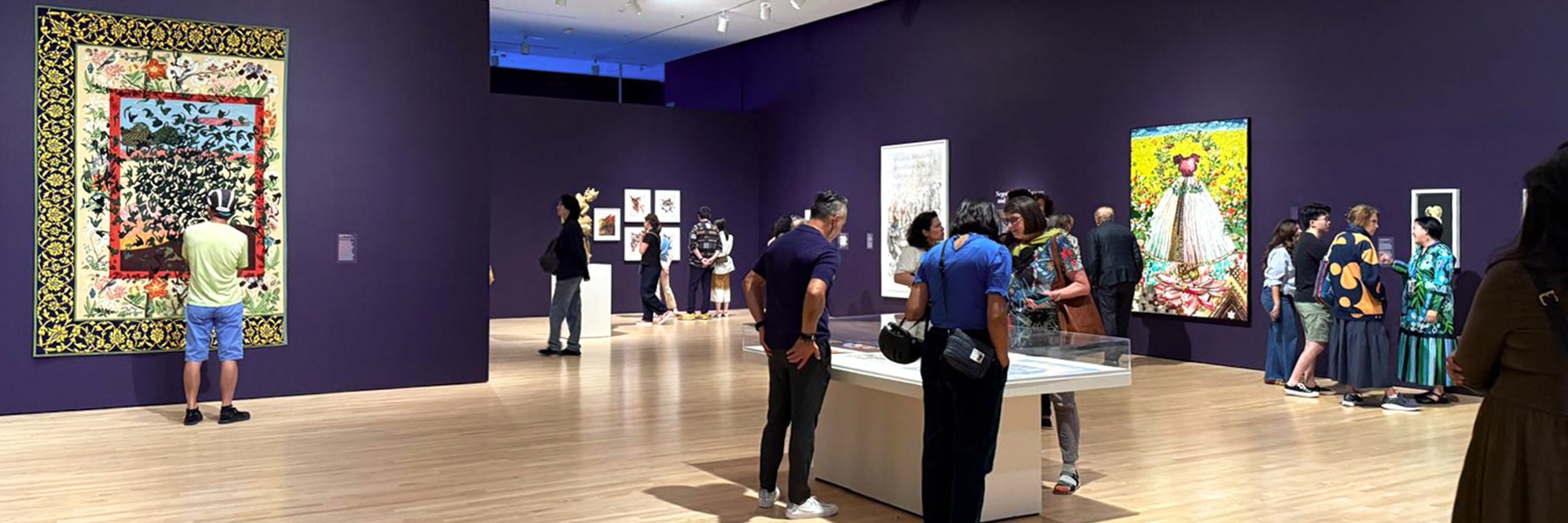
SHAHZIA SIKANDER: COLLECTIVE BEHAVIOR, A LANDMARK EXHIBITION AT CANTOR ARTS CENTER
A breathtaking solo exhibition by artist Shahzia Sikander recently opened at the Cantor Arts Center at Stanford University. Titled Collective Behavior, the exhibition features Sikander’s work spanning three decades and focuses on her recurring themes of feminism, cultural belonging and South Asian art forms. Sikander studied manuscript painting at the National College of Arts in Lahore and became the first woman to teach in the miniature painting department. In 1993, she moved to the United States and attended the Rhode Island School of Design for her MFA, and from 1995 to 1997, she participated in the residency program at the Museum of Fine Arts in Houston. She has since lived in New York City, and she holds teaching positions at Brown University and Columbia University.
Collective Behavior marks the Cantor’s largest installation of an Asian American artist to date. Below, we share our impressions of this thought-provoking exhibition and some insights into Sikander’s fascinating practice.
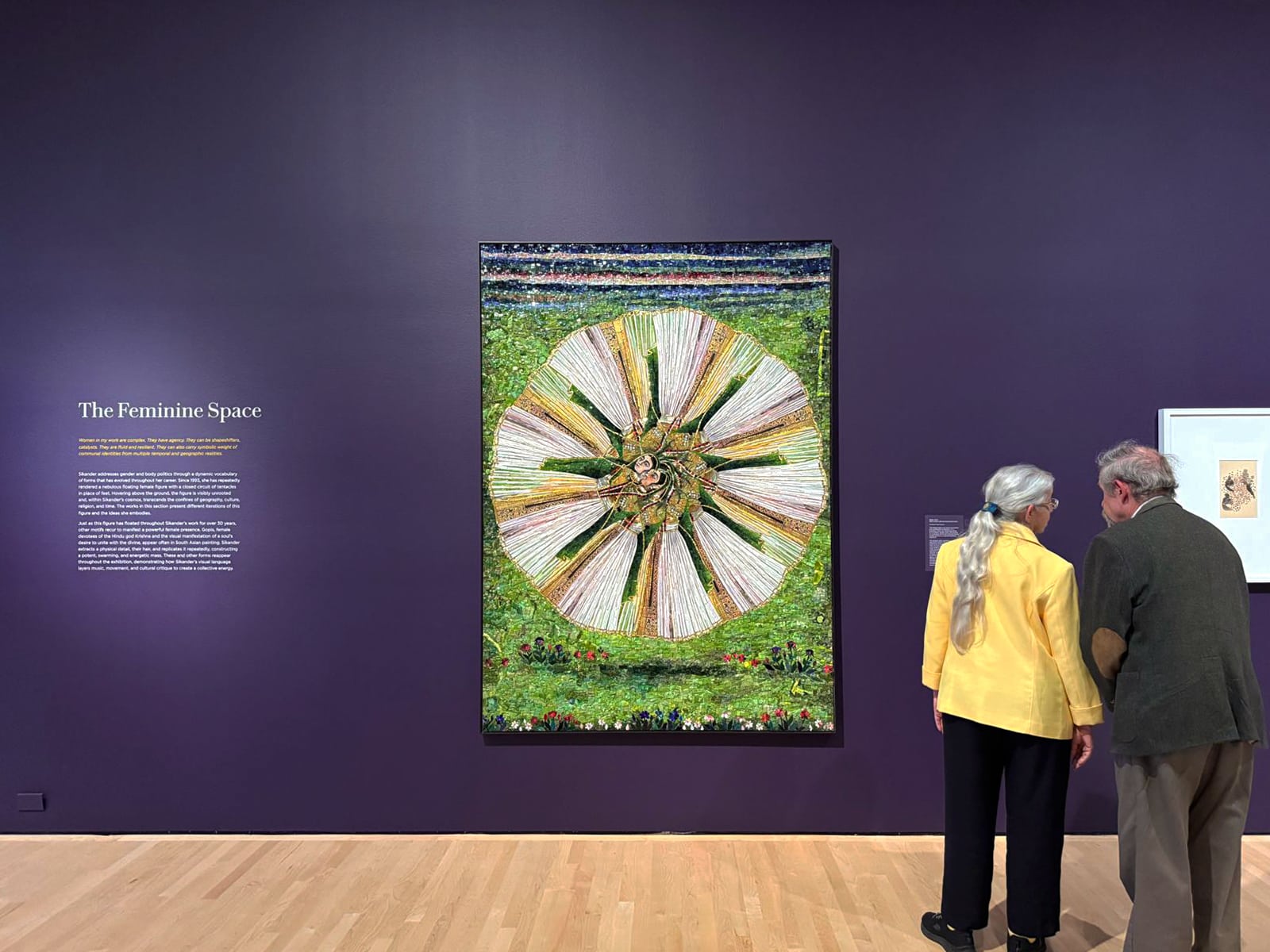
Born in Pakistan and now based in the US, Sikander offers a modern approach to traditional South Asian art forms like miniature painting. She incorporates traditional motifs, like lotuses, and references traditional clothing and architecture, but she is firmly rooted in her perspective as a woman and as an immigrant. She works across a wide range of mediums, including painting, drawing, digital animation, mosaic, sculpture and glass.
One of the works on view, for example, mimics an open manuscript. Like the hand painted books made during the Mughal Empire, Sikander’s scenes are contained by intricate borders with natural and geometric designs. However, on a closer look, the central scenes are abstracted: on the left page, a figure falls from the sky into a modern courtyard, and on the right page, a figure with the head of a bald eagle is surrounded by quick white and grey brushstrokes, which suggest flapping wings.
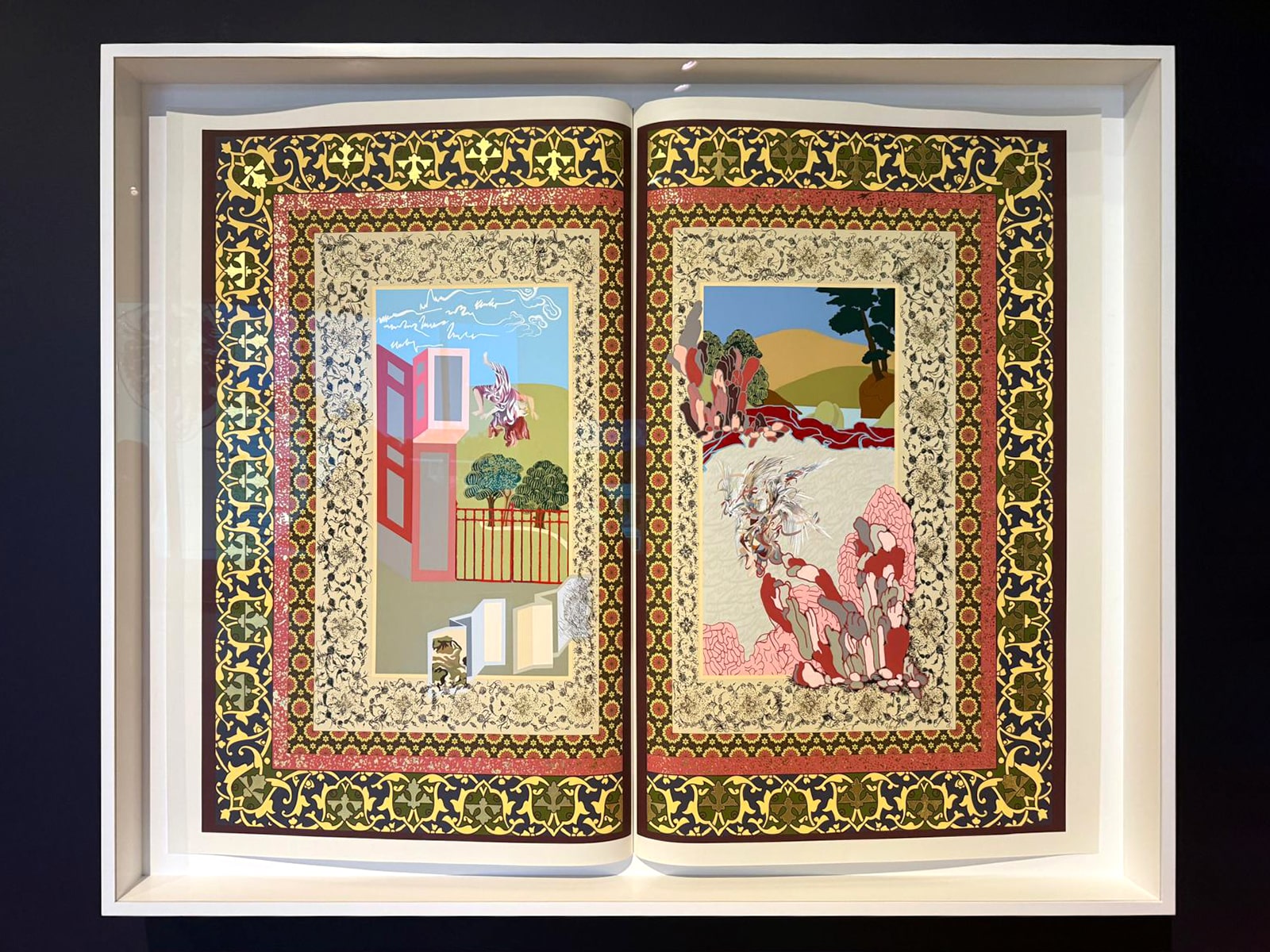
Sikander is particularly interested in depicting women with agency—in control of their lives, their image and their legacy. As she explains, “Women in my art function as agents of resistance, change, nurture and power. They are centered as symbols of endurance and transformation within vast global histories of empire.”
One stunning mosaic, made from hundreds of individually selected pieces of glass, depicts a female figure standing on a lotus flower, against a field of colorful flowers. The figure is suggested only through a lehenga choli, without a body inhabiting the clothing, and a wreath of flowers circles where her head would be. With no specific face, this figure could be any woman, and she cannot be judged based on her appearance. The use of mosaics also considers the idea of fragmentation and piecing together parts of history to make cohesive narratives.
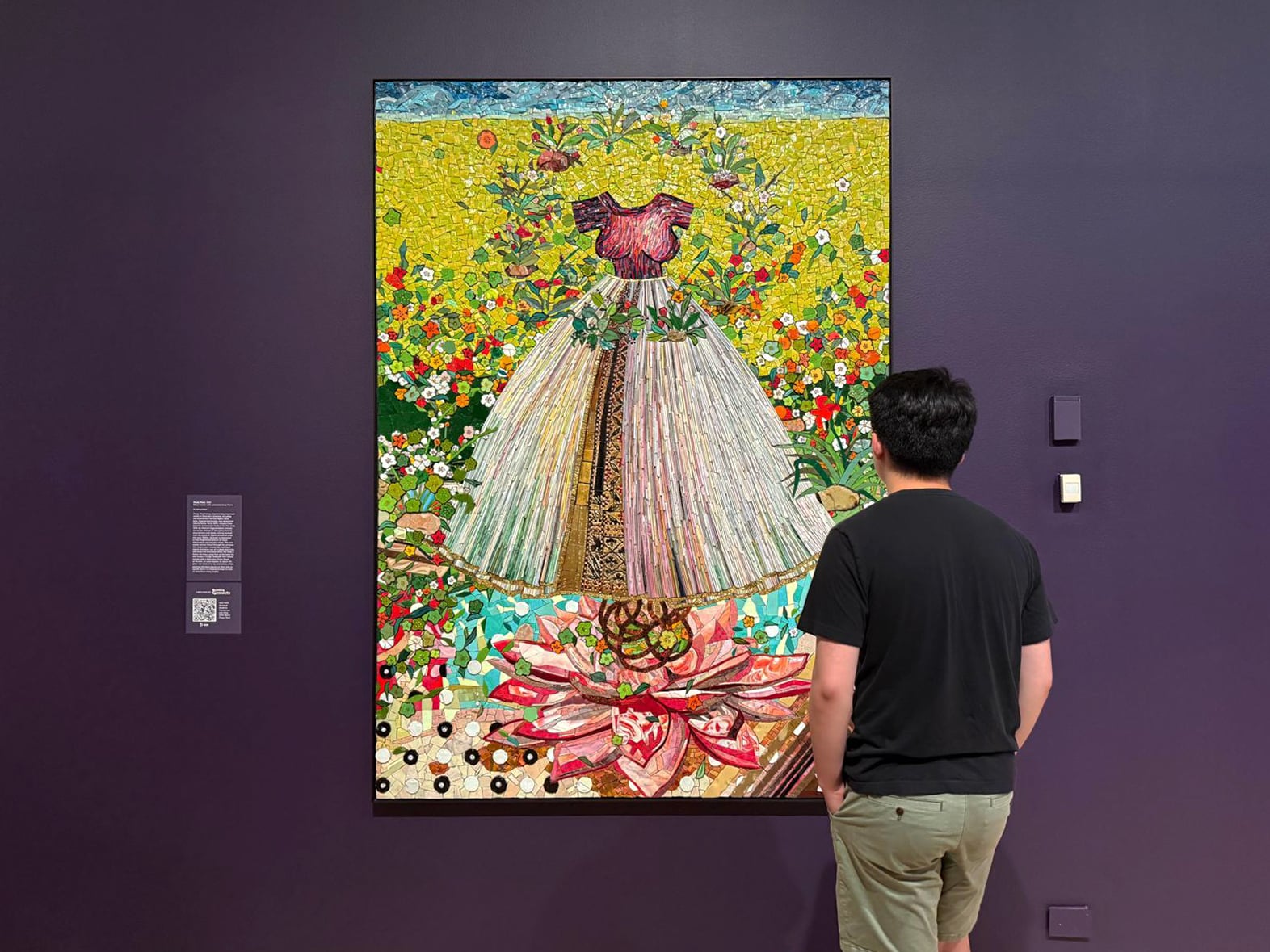
Ultimately, Shahzia Sikander is deeply inspired by her personal experiences. One touching series on view was inspired by her father, Sikander Rashid Ahmed (1936-2021), in memory of his “unconditional love” and his influence as the artist’s “source of resilience and insight to this day.” This portrait of him is a beautiful reminder of the role of family in uplifting women and the passing down of culture from generation to the next.
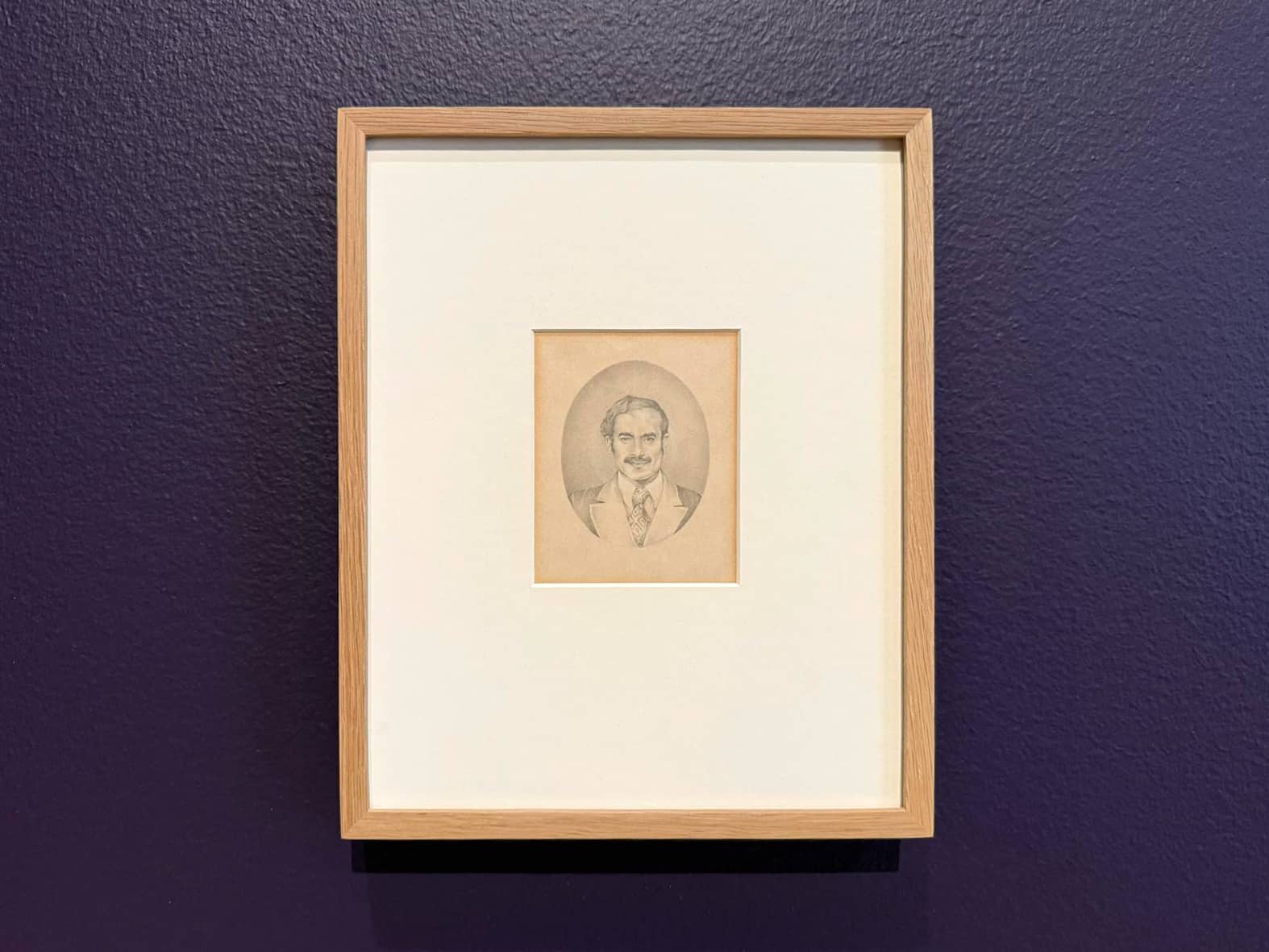
Shahzia Silander: Collective Behavior will be on view through January 25, 2026 — it is an absolute must-see if you are in the San Francisco Bay Area!
For more resources on South Asian art in California, check out our Resources page on local Indian art museums, galleries and institutions.
— Sonia Patwardhan

Leave a Reply
You must be logged in to post a comment.